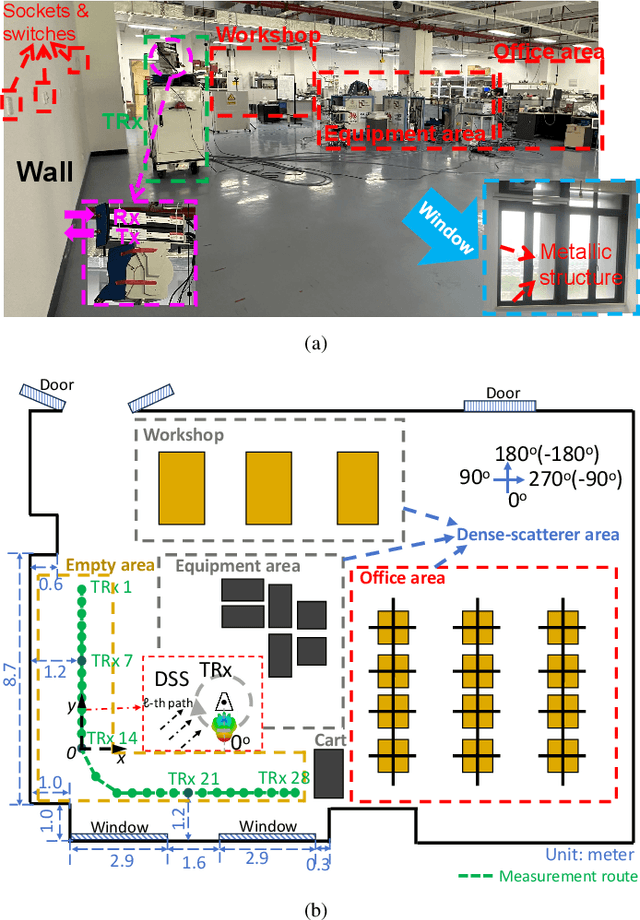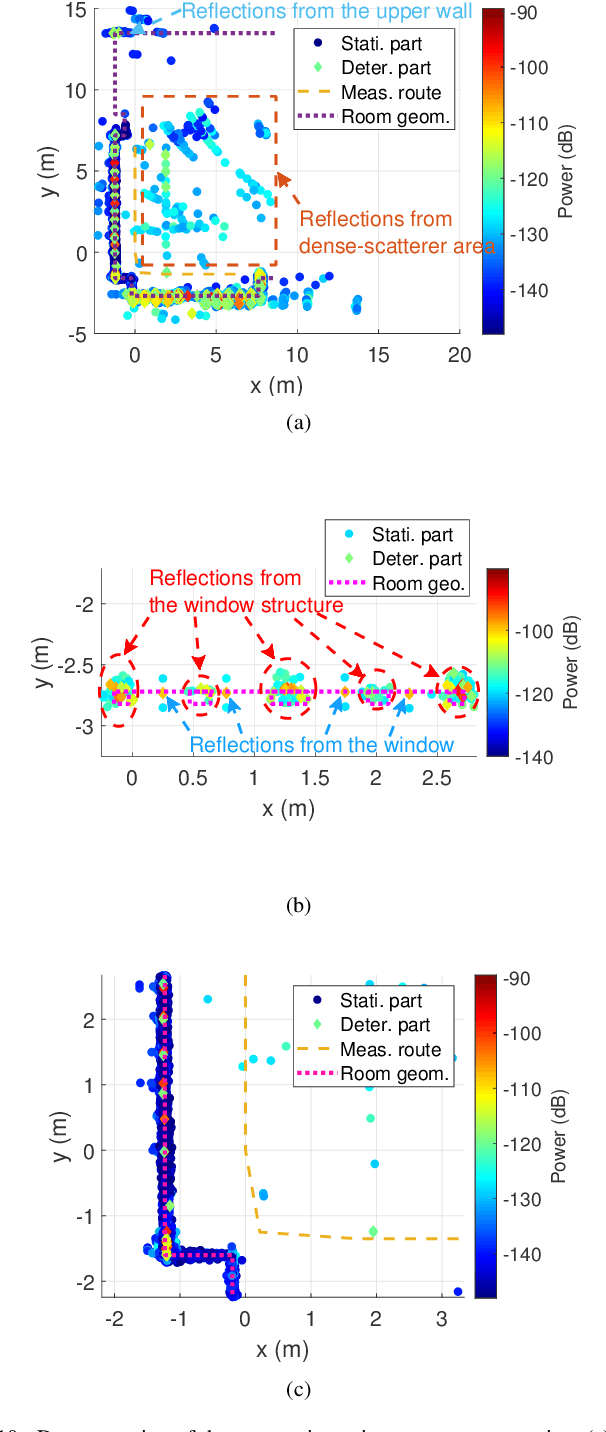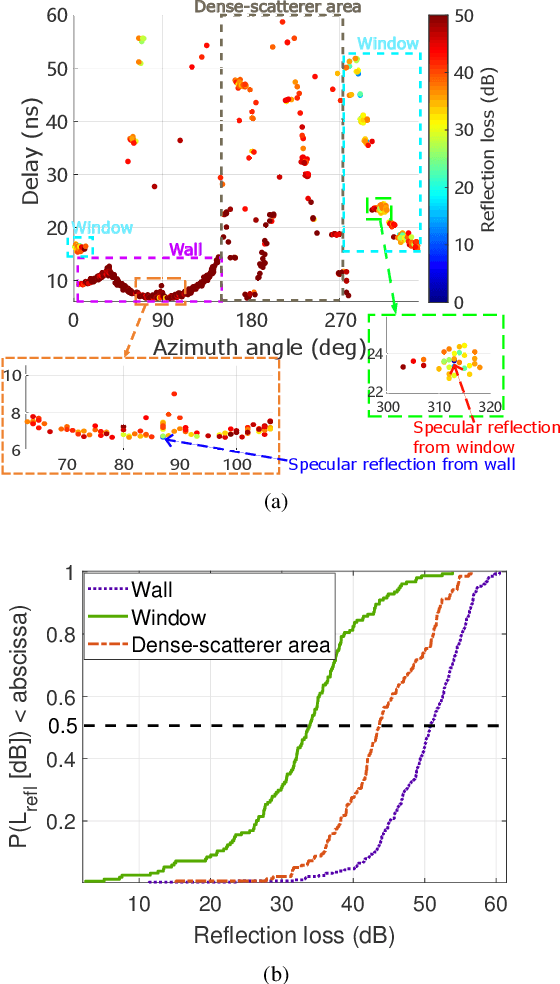Hybrid Channel Modeling and Environment Reconstruction for Terahertz Monostatic Sensing
Paper and Code
Nov 12, 2024



THz ISAC aims to integrate novel functionalities, such as positioning and environmental sensing, into communication systems. Accurate channel modeling is crucial for the design and performance evaluation of future ISAC systems. In this paper, a THz measurement campaign for monostatic sensing is presented. VNA-based channel measurements are conducted in a laboratory scenario, where the transmitter and receiver are positioned together to mimic monostatic sensing. The centering frequency and measured bandwidth for these measurements are 300 GHz and 20 GHz, respectively. A DSS scheme is employed to capture spatial sensing channel profiles. Measurements are conducted across 28 transceiver locations arranged along an 'L'-shaped route. Then, an element-wise SAGE algorithm is used to estimate the MPC parameters, i.e., amplitude and delay. Specular and diffuse reflections are analyzed based on geometric principles and the estimated MPC parameters, where the effects from the radiation pattern are observed. A geometry-based MPC trajectory tracking algorithm is then proposed to classify the MPCs and de-embed the effects of the radiation pattern. Following this algorithm, a hybrid channel model is proposed based on the de-embedded MPC parameters. In this hybrid channel model for monostatic sensing, the MPCs are categorized into target-related and environment-related components. The target-related components are utilized for target detection and identification, while the environment-related ones focus on geometrical scenario reconstruction. A demonstration of geometrical environment reconstruction, along with an analysis of reflection loss for target identification, is subsequently presented. This work offers valuable insights into THz monostatic sensing channel modeling and the design of future THz ISAC systems.
 Add to Chrome
Add to Chrome Add to Firefox
Add to Firefox Add to Edge
Add to Edge